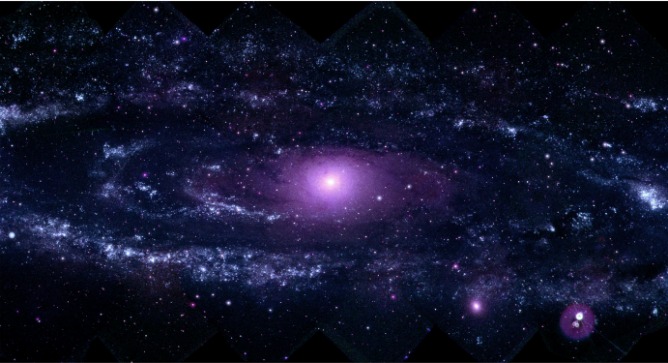A mysterious flash of light was observed in the dark sky on June 14, 2015. Since then, astronomers and astrophysicists have been working to find an explanation as to what process could have caused it.
Now, postdoctoral fellow Giorgos Leloudas and Prof. Avishay Gal-Yam of the Particle Physics and Astrophysics Department of the Weizmann Institute of Science –together with colleagues at the Institute, Drs. Paul Vreeswijk, Ofer Yaron and Steve Schulze, Joel Johannson, and Ira Bar, as well as researchers around the world – have announced that the spectrum of the light observed was an extremely rare event: the destruction of a star by the gravitational tides of a black hole at the center of its galaxy.
The researchers ruled out a supernova as the light was double that of the brightest supernova recorded up to that point. Moreover, they noted that rather than gradually cooling, which is what happens in the average supernova, the temperature of the material emitting radiation went down – and then up again, remaining at the higher level for quite a while.
They noted that the site of the flash was a puzzle, as well: Supernovae tend to occur in young, “blue” galaxies, but this one took place in an old “red” galaxy, in which the stars were not really candidates for exploding.
Observing the light over several months, the team came to the conclusion that the best explanation for the unusual flash of light was the destruction of a star caught in the gravitational tides of an exceptionally massive black hole rotating extremely rapidly.
The results of this research were published recently in Nature Astronomy.
Fighting for Israel's truth
We cover what makes life in Israel so special — it's people. A non-profit organization, ISRAEL21c's team of journalists are committed to telling stories that humanize Israelis and show their positive impact on our world. You can bring these stories to life by making a donation of $6/month.








